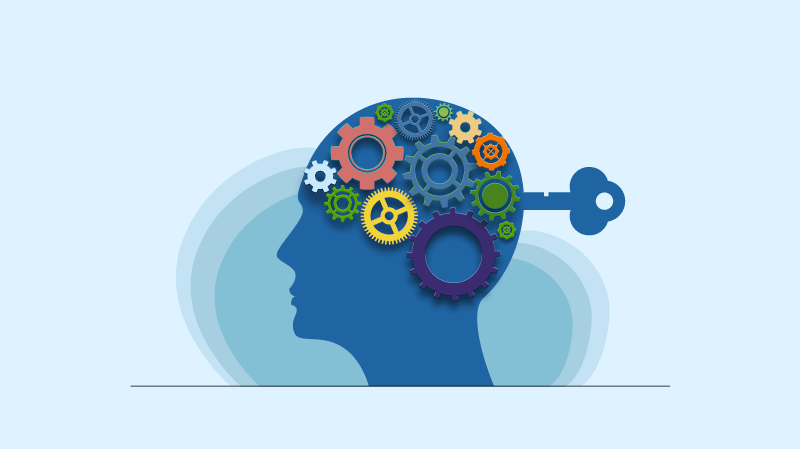A suicide occurs every forty seconds, resulting in approximately 500,000 Americans being hospitalized annually due to suicide attempts. In the UK, 1,588 individuals under 35 took their own lives in 2017, while globally, the annual suicide rate stands at 703,000 people (WHO, 2021). Furthermore, an estimated 17% of individuals in Western countries have experienced thoughts of suicide or self-harm at some point in their lives (ONS, 2017). On the other hand, about 10% of people worldwide experience loneliness at some stage in their lives (Surkalim et al., 2022).
In an experiment, McClelland and colleagues interviewed several individuals to explore their experiences of social support and other interpersonal factors leading up to their suicide attempts (McClelland et al., 2022). The study revealed that loneliness can originate from various sources, including recent break-ups in romantic relationships, concerns within families, such as parenting issues, and social network relations, encompassing friends and community ties.

Man proposing marriage and scared woman rejecting
In the United States, 70% of heterosexual couples break up during the first year of their relationships, while only about 19% of teenagers are engaged in romantic relationships. Over the past two decades, the percentage of American adults who are married has declined from 58% in 1995 to 53% today. During the same period, the number of adults cohabiting with unmarried partners has risen from 3% to 7%. Nevertheless, young individuals are more open to cohabitation, with 78% of those aged 18 to 29 expressing acceptance of unmarried couples living together, even without the intention of marriage.
Several factors contributing to resistance to marriage have been identified, including anxiety regarding marriage, avoidance of married couples and weddings, difficulties in coping with commitment-related anxiety, and a tendency to push people away.
Many individuals have shared their experiences of gamophobia, a fear of commitment in marriage or romantic relationships. Approximately 1 in 10 American adults and 1 in 5 teenagers will experience a specific phobia disorder at some point in their lives, with gamophobia being one such phobia. People with gamophobia often struggle in long-term relationships. Many attribute their fear of commitment or marriage to past traumatic events, and gamophobia can be a protective response. This fear may develop due to specific experiences, such as witnessing parents undergo a difficult marriage or divorce, growing up with the belief that relationship or marital problems cannot be resolved, or not wanting to follow in their parents’ footsteps. It could also result from a past failed relationship or a fear of “missing out” by committing to one person. People with gamophobia frequently exhibit symptoms like difficulty maintaining intimate relationships, intense anxiety while dating, constant worry about the relationship ending, anxiety when they see a happily married couple, pushing people away, or abruptly ending relationships.
Thankfully, there are now scientific methods and techniques available to overcome the fear of loneliness. Instead of trying to conquer the skepticism of a partner and grappling with the pressures of marriage, psychological therapies and scientific approaches provide alternative paths for having children without marriage.

Shift Your Perspective to Achieve Your Desires
Cognitive-Behavioral Treatment
Individuals struggling with gamophobia and undergoing Cognitive-Behavioral Treatment are guided to replace negative thoughts with more positive ones. This therapy also equips them with new coping strategies that facilitate the development of healthy, reassuring relationships with reduced commitment-related anxiety. CBT is often the primary treatment for anxiety disorders due to its proven effectiveness. During this process, a therapist can assist individuals in learning how to think and act differently in specific situations, which can be invaluable in overcoming their fear of marriage.
CBT can help individuals delve into the thoughts and beliefs that underlie their fear of loneliness. A skilled CBT therapist can aid the patient in identifying the specific beliefs and cognitive patterns contributing to their anxiety through therapy sessions.
For instance, someone who fears loneliness may believe they are unlovable, leading them to avoid social situations or isolate themselves from others. With the help of CBT, individuals can learn to identify and counter these negative thoughts, replacing them with more positive and grounded ones.
Furthermore, CBT can help people acquire coping mechanisms to manage their fear of loneliness. The therapist may teach relaxation techniques like deep breathing or progressive muscle relaxation to assist patients in controlling their anxiety during challenging situations.
CBT can also support individuals in building support networks beyond romantic relationships. The therapist may suggest exploring new interests or hobbies, participating in social gatherings, or reconnecting with former acquaintances. Engaging in these activities and forming meaningful relationships with others can alleviate feelings of loneliness.
CBT encourages individuals to adopt a more positive perspective on being single. The therapist can reframe their views on singleness to highlight its advantages and opportunities rather than solely focusing on the drawbacks.
In Vitro Fertilization (IVF)

IVF (in vitro fertilization) or insemination of female egg with microscope.
In vitro fertilization is a method by which a woman can achieve pregnancy without engaging in sexual intercourse with a man. It involves the union of a woman’s egg and a man’s sperm in a laboratory dish. Normally, fertilization of an egg by sperm takes place within a woman’s body, and if the fertilized egg attaches to the uterine lining and develops, a baby is conceived. This process is known as natural or unassisted conception. IVF, on the other hand, falls under the category of assisted reproductive technology (ART), indicating that specific medical procedures are performed to assist a woman in getting pregnant.
The IVF process comprises several steps:
Egg Donation
Another method for achieving a biological child using a man’s sperm is through egg donation. In this process, hormone injections are administered to the egg donor to stimulate the ovaries to produce multiple eggs, in addition to the one egg women naturally produce each month. The procedure is scheduled when the eggs are mature and ready for extraction. The egg donor receives a sedative, and each mature follicle is punctured with an ultrasound-guided needle to extract the eggs. The recipient’s partner’s sperm or chosen donor sperm is used to attempt to fertilize multiple eggs in a laboratory through in vitro fertilization (IVF). The recipient’s uterus is then used to receive the embryo (fertilized egg). Typically, frozen embryos are transferred at a later time, and upon successful implantation, the embryo develops into a healthy baby inside the uterus.
Intrauterine Insemination (IUI)
Intrauterine insemination is a fertility treatment that involves injecting sperm directly into a woman’s uterus during ovulation. Single women can become pregnant without having sexual intercourse with a man using donor sperm. The procedure often entails taking fertility drugs to stimulate the ovaries to release a larger number of eggs. To ensure that only the healthiest and most viable sperm are used, the donor sperm is processed and prepared. A small, flexible catheter is inserted through the cervix to deliver the sperm to the uterus. Timing is crucial for this treatment and must coincide with the woman’s fertile window, determined by tracking follicle development in the ovaries and monitoring specific hormone levels in the blood. Intrauterine insemination success rates vary based on several factors, including age, overall health, and the quality of the sperm and eggs used. Single women interested in IUI should consult a fertility doctor for personalized guidance and support throughout the process.
At-Home Insemination
For single women using donor sperm to conceive, home insemination is an option. This procedure involves conducting insemination at home after obtaining sperm from a donor, either through a sperm bank or from a known donor. It allows for an attempt to achieve pregnancy in the comfort of one’s home through intracervical insemination (ICI). The first step involves selecting a donor and purchasing sperm from a reputable sperm bank or obtaining sperm from a known donor who has undergone health and genetic testing. The sperm is often sent in a chilled container and must be used within a specified timeframe. The sperm sample is drawn into a needleless syringe, inserted into the vagina, and expelled onto the cervix. Individuals can use either the ICI or Intrauterine Insemination (IUI) prepped samples for at-home ICI.
Need more information on how to build a family outside mainstream concepts? Here you go!
This piece was edited by Lily Cook as part of Professor Kelley Crawford’s Digital Civic Engagement course at Tulane University.
 NOLAbeings
Multimedia artist Claire Bangser created NOLAbeings as a portrait-based story project that marries...
NOLAbeings
Multimedia artist Claire Bangser created NOLAbeings as a portrait-based story project that marries...
 Data corner: Adobe Suite (create a PDF, social media graphic, presentation, edit a photo and video
Data corner is where you go to work with analytics and top tech skills. It takes on everything from PERL and SQL to Canva and Sprout Social.
Data corner: Adobe Suite (create a PDF, social media graphic, presentation, edit a photo and video
Data corner is where you go to work with analytics and top tech skills. It takes on everything from PERL and SQL to Canva and Sprout Social.
